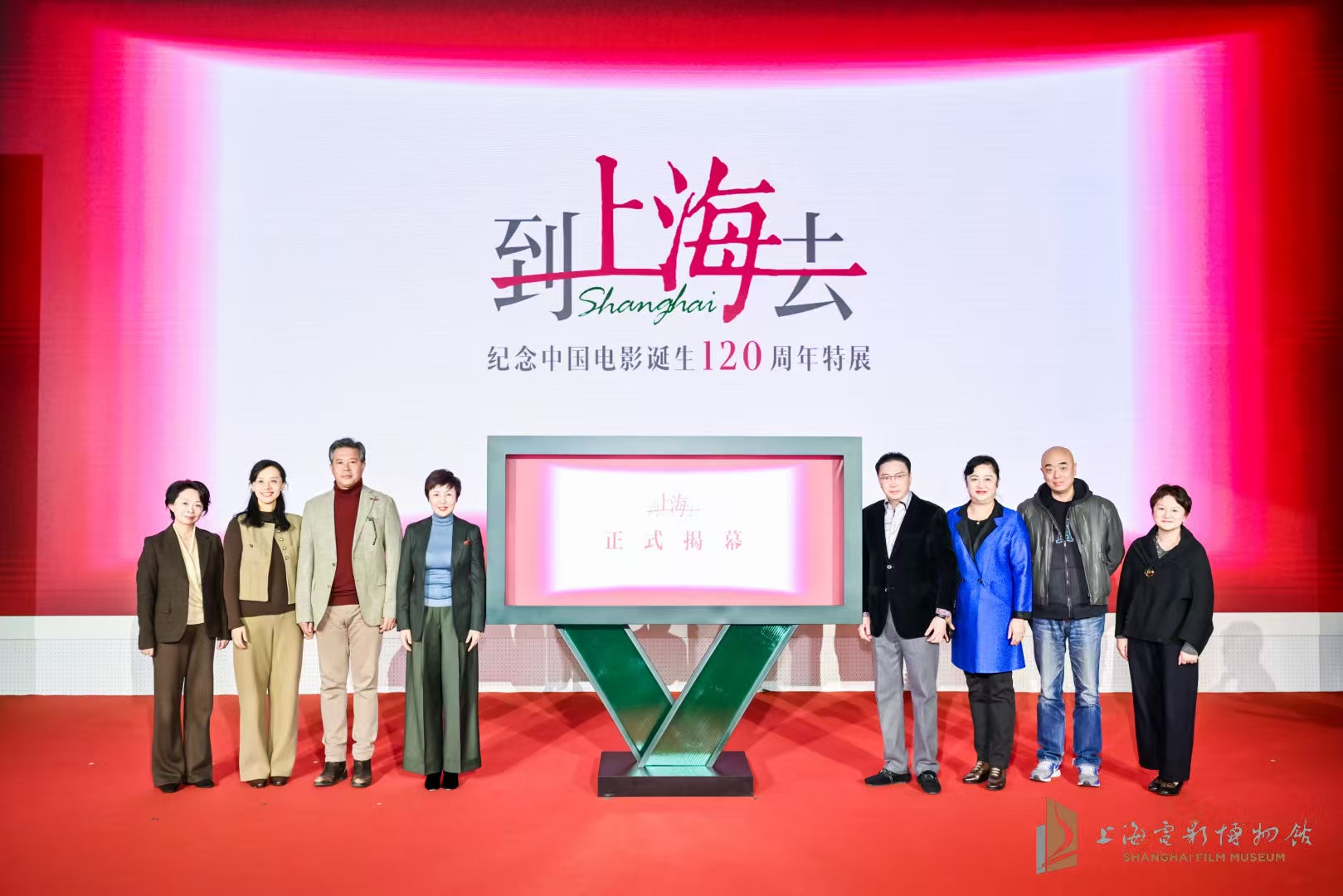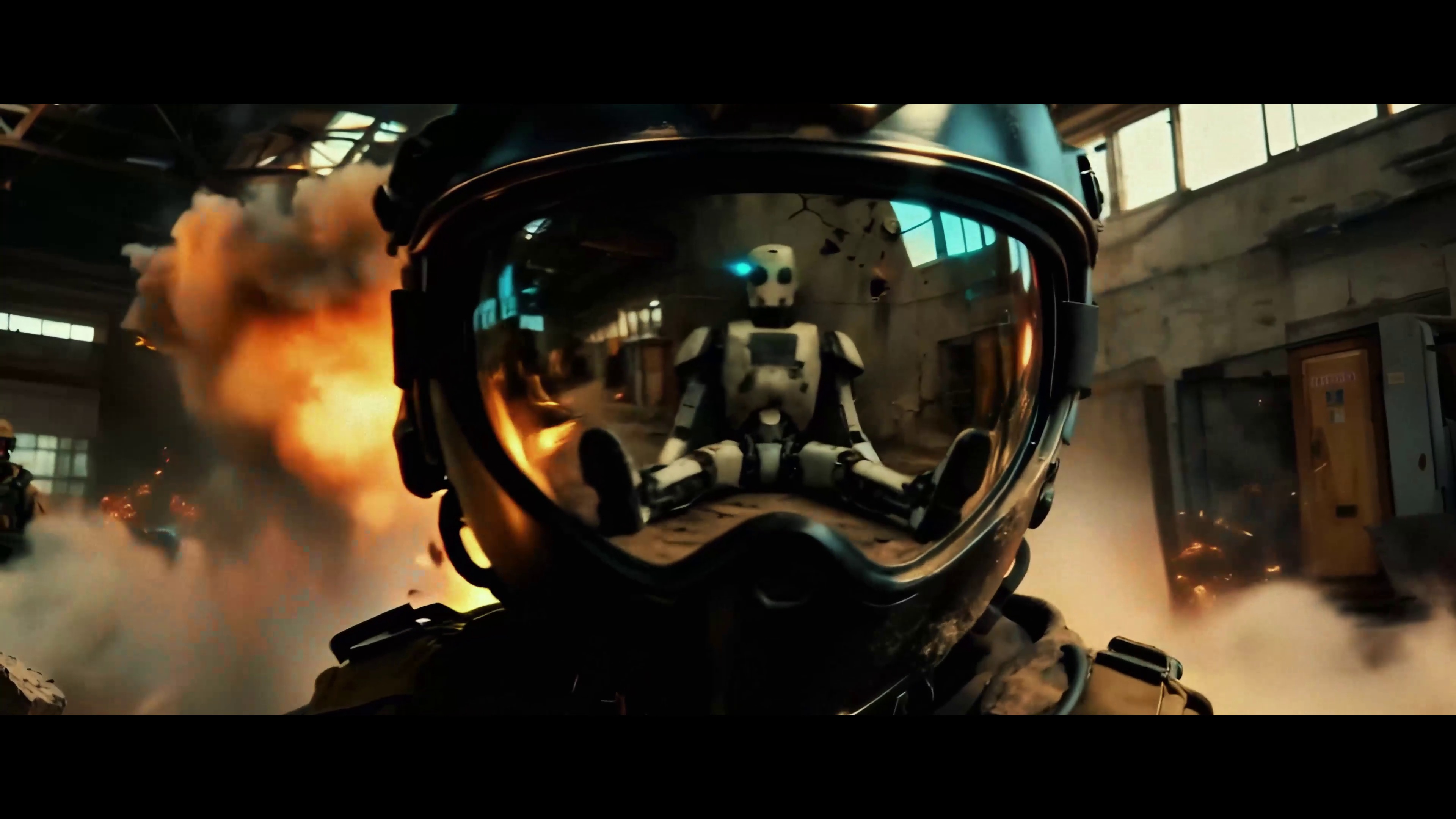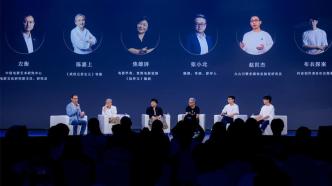From youth farces in the streets to the warmth between grandparents and grandchildren in the alleys, from the absurd satire of the war years to the reflection and awakening of special times, these five classic films are not only a microcosm of the golden age of Shanghai cinema, but also a witness to the development and changes of Chinese society.
On October 16th, tickets officially went on sale for the domestic film section of the "Huan Ying 4K" Chinese and Foreign Restored Film Exhibition, directed by Shanghai Film Group and hosted by Shanghai Film Technology Factory. Five meticulously restored classic Chinese films, including "Karajan Kidnapping," "Shanghai Holiday," "Sanmao Joins the Army," "Legend of Tianyun Mountain," and "The Herdsman," will be showcased through a series of events, including film restoration exhibitions, film screenings, in-depth lectures, and industry forums. This will offer audiences a "touchable journey through film art," allowing classic films to be not only "remembered" but also "seen" and "felt."
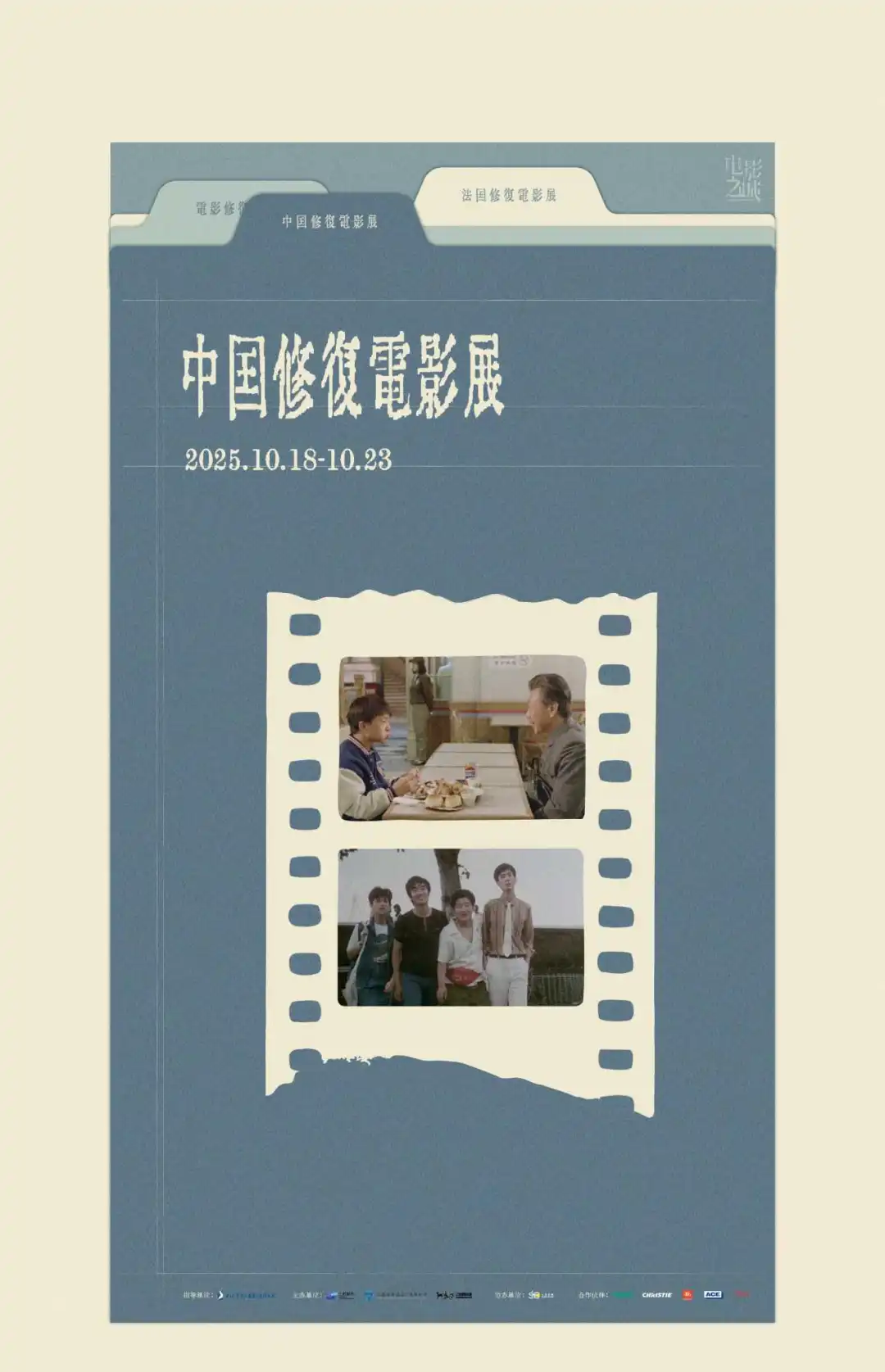
The China Restoration Film Exhibition will be held from October 18th to 23rd
Famous director's classics are reborn on the big screen
The five films selected for this film festival are all milestones in the history of Chinese cinema, covering a variety of genres such as comedy, family, and historical reflection. They have all been processed with professional restoration technology to reproduce the classic charm with clearer picture quality and richer colors.
"Kidnap Karajan" (1988), directed by Zhang Jianya, was inspired by the cultural boom during the Berlin Philharmonic Orchestra's visit to China in the 1980s. It tells the absurd story of four young people from the lower classes who "planned to kidnap" the conductor in order to watch a performance. Through black humor, it reflects the enthusiasm and confusion of young people for culture in the early days of reform and opening up.
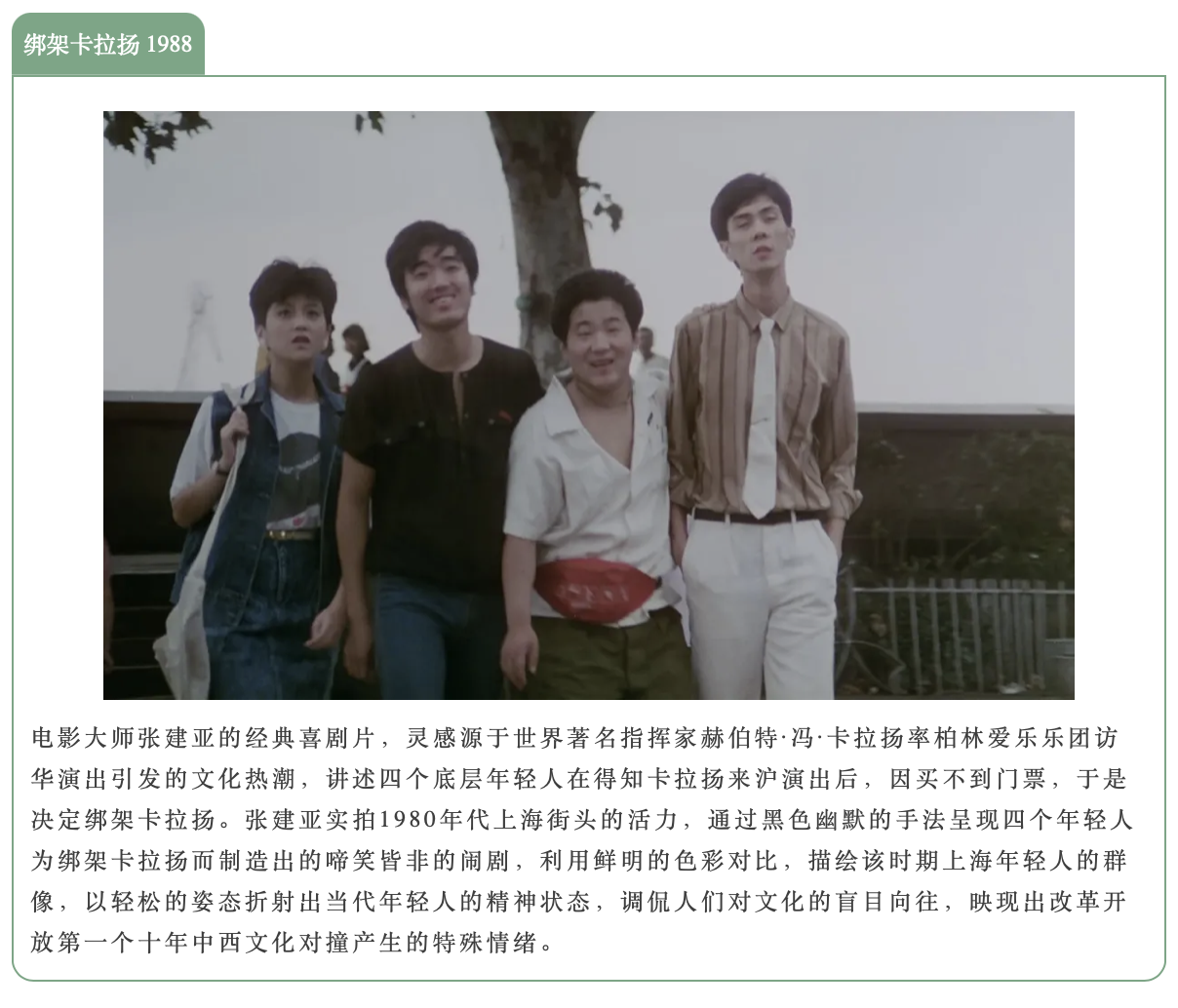
The Kidnapping of Karajan (1988)
Zhang Jianya's "Sanmao Joins the Army" (1992), also adapted from Zhang Leping's comic of the same name, uses surrealist techniques to depict the young Sanmao as she "joins the army to fight against the Japanese," offering a hilarious reflection on the absurdity of war and the resilience of human nature. Both films, with their distinct imprint of their times and vivid group portraits, offer excellent examples of contemporary observation.
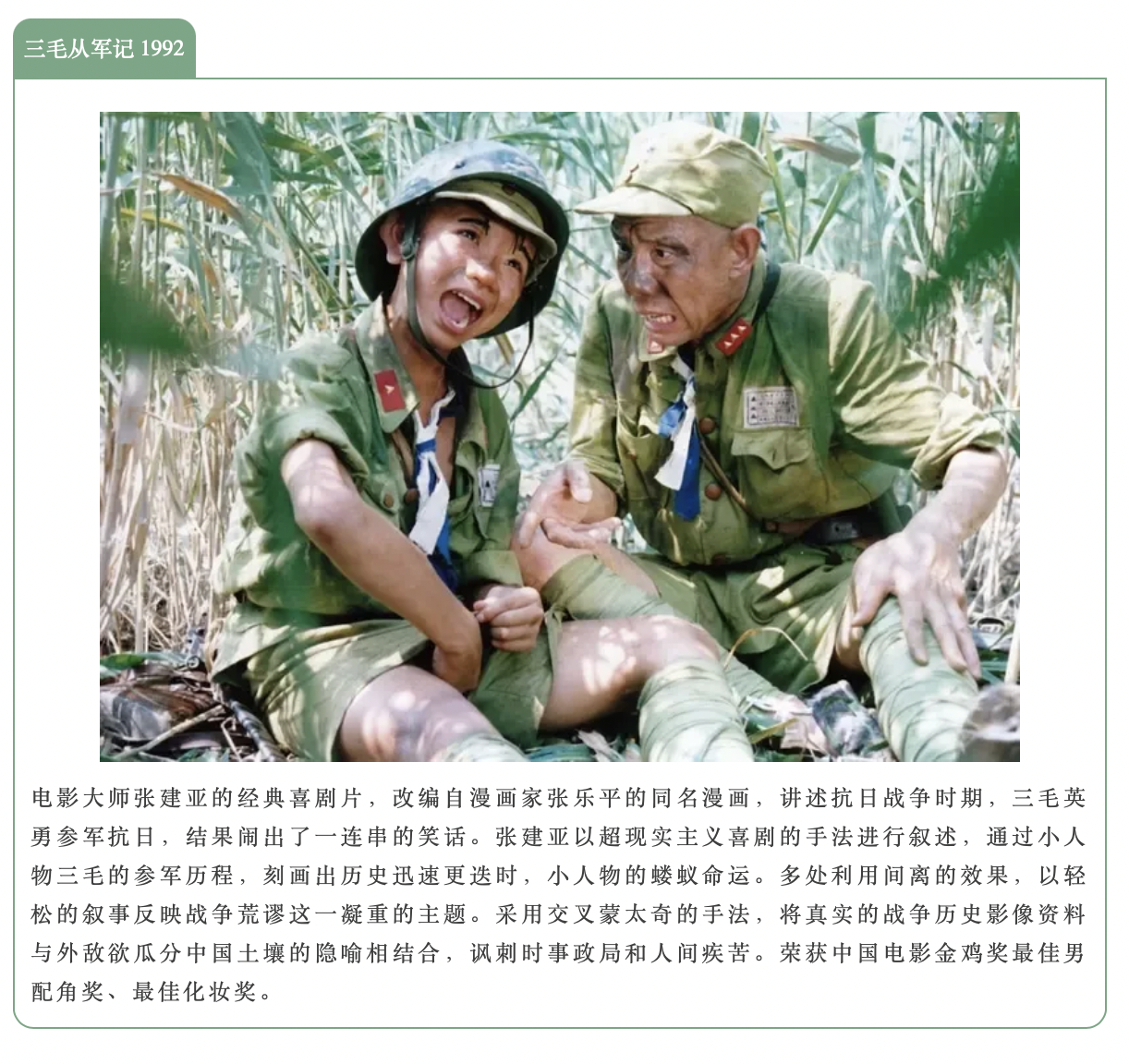
Sanmao's Military Life (1992)
Director Ann Hui's "Shanghai Holiday" (1991) focuses on the daily interactions between a retired man and his American-raised grandson in a Shanghai alley. Through the resolution of conflicts between the grandfather and grandson, it delicately depicts intergenerational communication and the vibrant urban life amidst the clash of Eastern and Western cultures. Master photographer Li Pingbin's capture of Shanghai's alleyways in the 1980s provides viewers with a precious visual memory of the city.
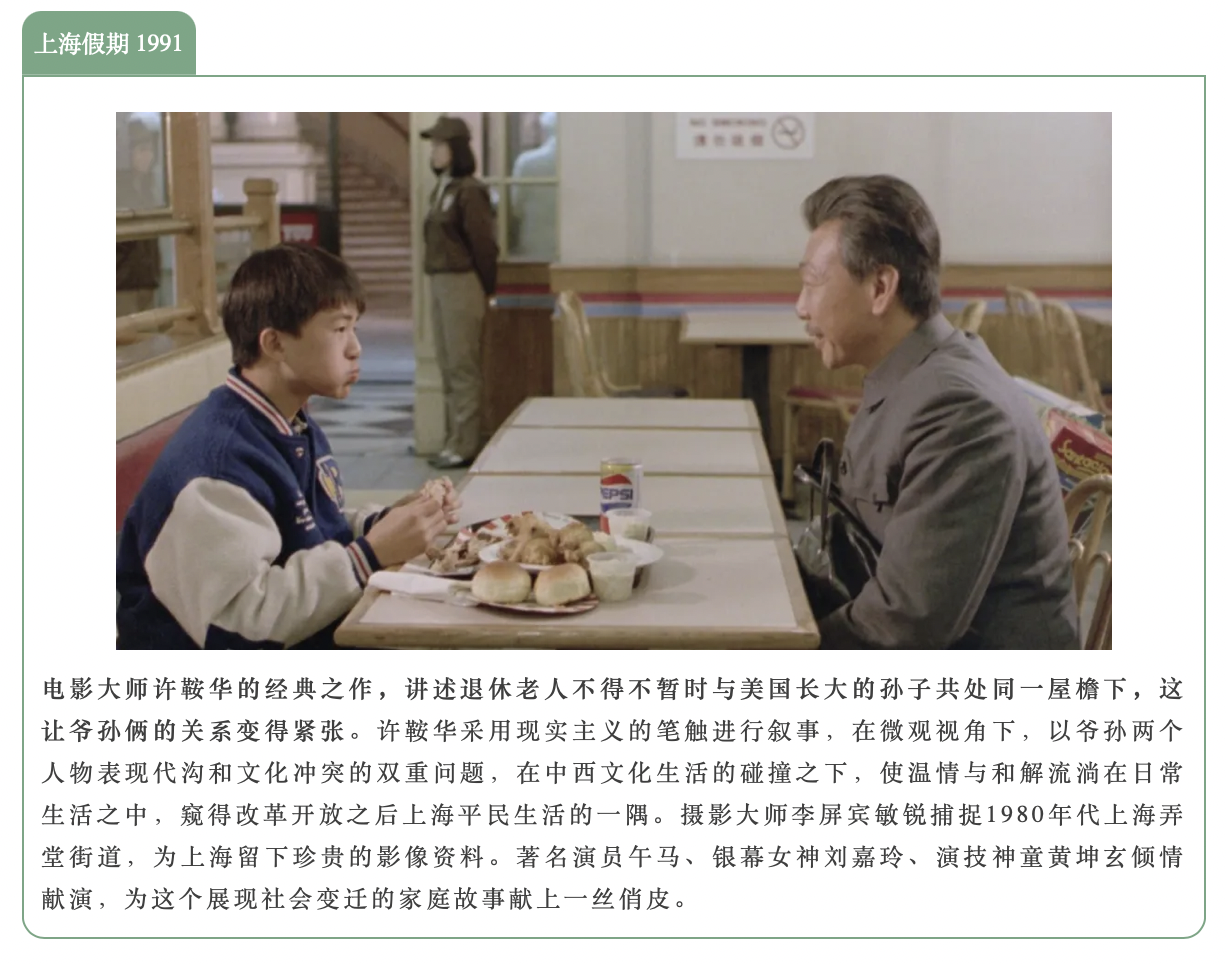
Shanghai Holiday (1991)
Two films in director Xie Jin's "Reflection Trilogy"—"Legend of Tianyun Mountain" (1981) and "The Herdsman" (1982)—take audiences back to a unique historical period. "Legend of Tianyun Mountain" uses flashbacks to unravel the entanglement of love and fate, reflecting on the turmoil of the times through individual experiences; "The Herdsman" uses simple folk songs to evoke a deep affection for his country through a conversation between a Northwest elementary school teacher and his father who has returned from overseas. Both films, with their high sense of realism and artistic appeal, have become representative works of "liberation of thought" in the history of New China's cinema.
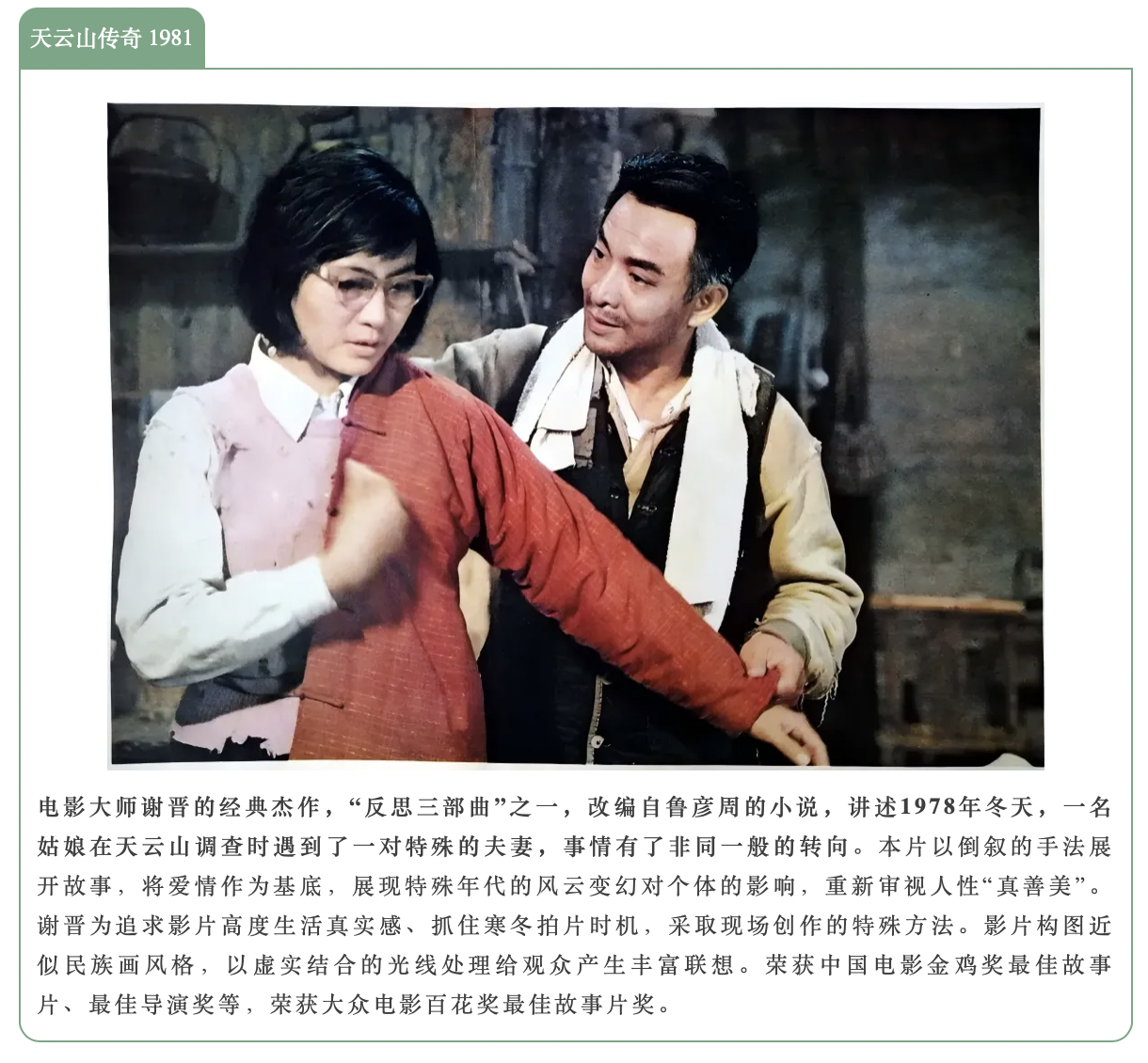
Legend of Tianyun Mountain (1981)
Exploring the secrets behind film restoration
This film festival is more than just a film screening; it's also an in-depth educational opportunity and showcase for film restoration technology. Organizers explain that all films on display have been meticulously processed by a digital restoration team. Through techniques like denoising, color grading, and frame infilling, they enhance image clarity and color reproduction while preserving the original film texture, allowing classic works to speak to contemporary audiences with a "younger look."
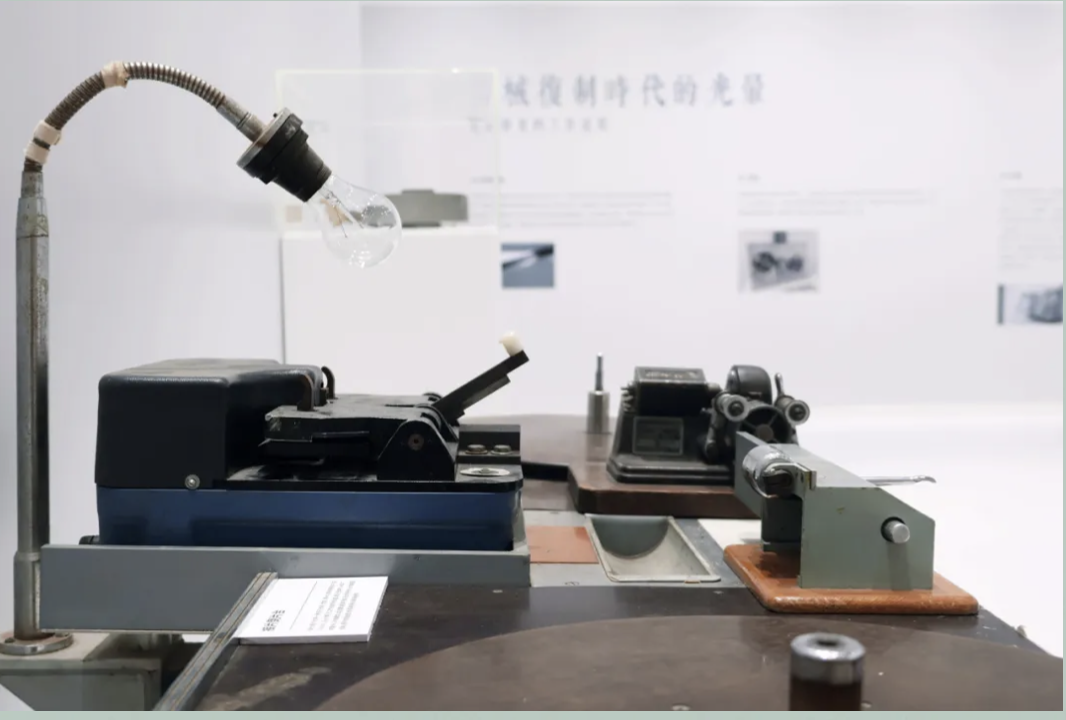
"Fighting with Time" Film Restoration Technology Exhibition
In order to allow the audience to experience the charm of restoration more intuitively, the film festival has specially set up two special events: the film restoration technology exhibition held at the same time by Shanghai Cinema SHO will reveal the restoration process such as film cleaning, digital scanning, and color correction through physical exhibits, interactive installations and comparative images before and after restoration, and show the technological code of "rebirth of old movies".
On October 18th, in Songjiang, Shanghai, audiences will not only be able to watch the film version of the film in person, but will also have the opportunity to visit the restoration base of the Shanghai Film Technology Factory and follow experienced film restorers to experience the magic behind the new life of old films. A lecture themed "From Film to Digital: The Science and Art of Film Restoration" will analyze the technical difficulties and artistic considerations behind restoration.
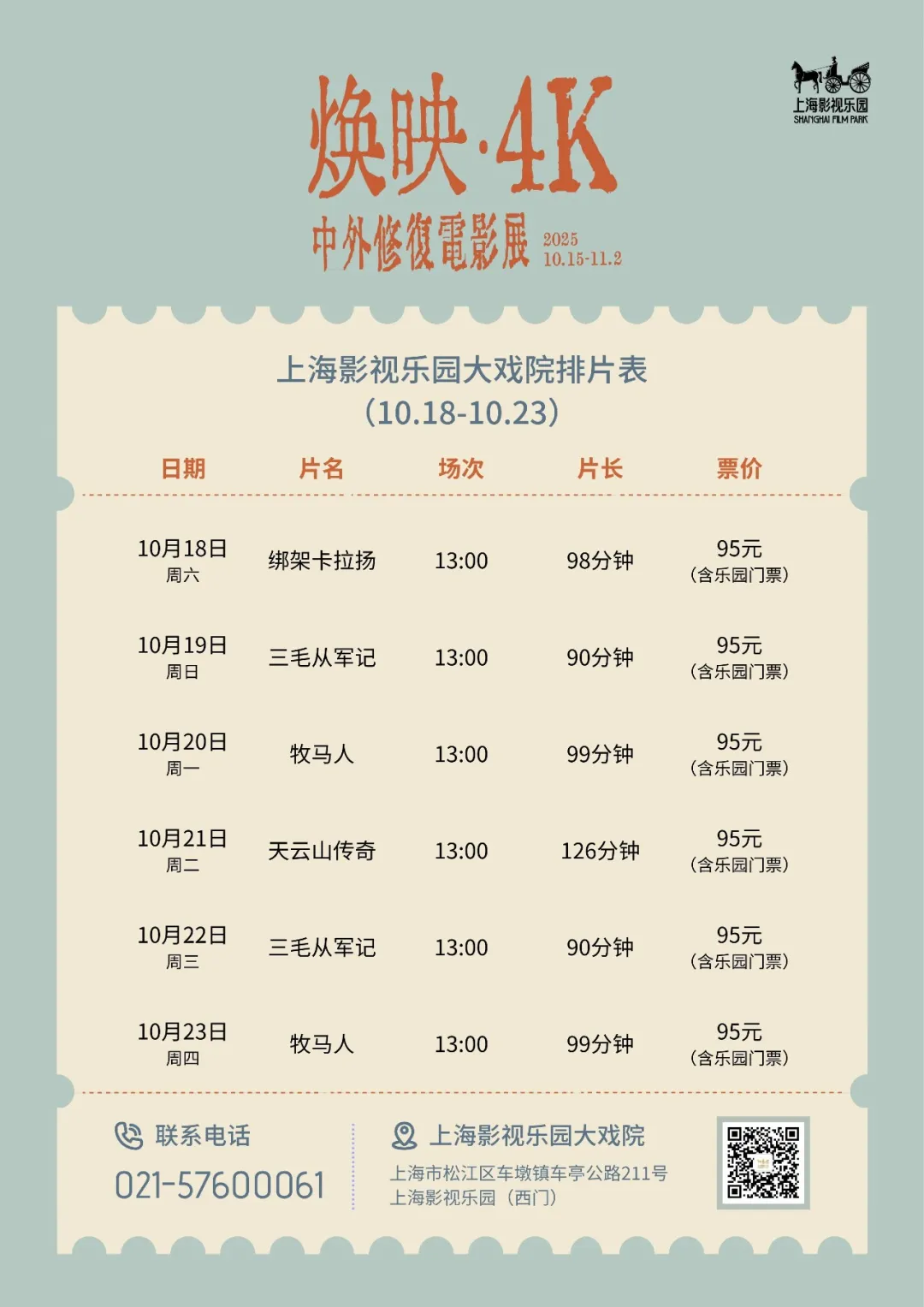
Shanghai Film and Television Park Screening Schedule
The "Film Restoration Forum" held in conjunction with the screening will bring together well-known domestic directors, scholars and restoration experts to discuss topics such as "The contemporary value of classic films" and "Protection of film heritage in the digital age", providing academic support for the inheritance and innovation of film culture.
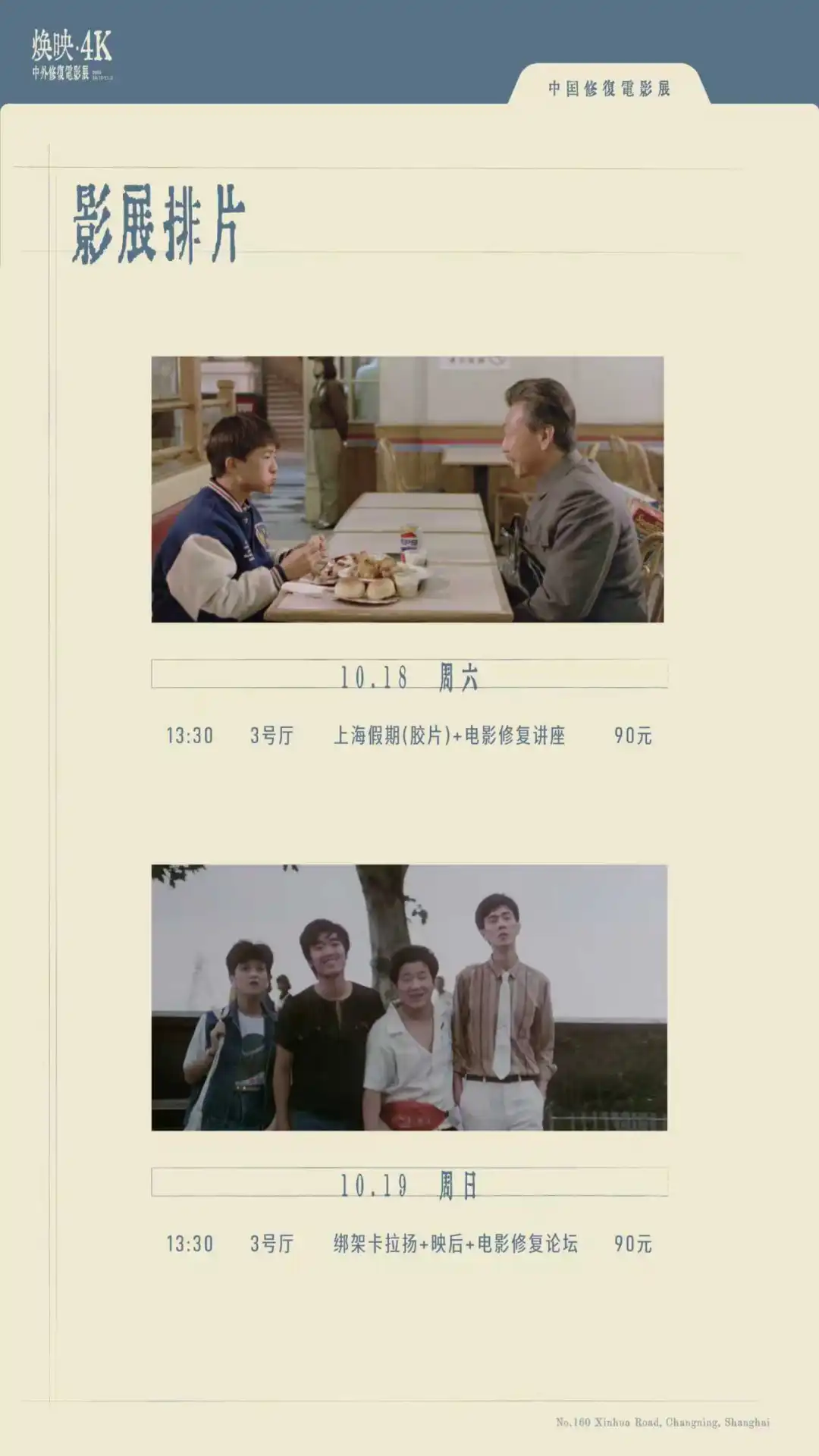
Shanghai Cinema SHO schedule
